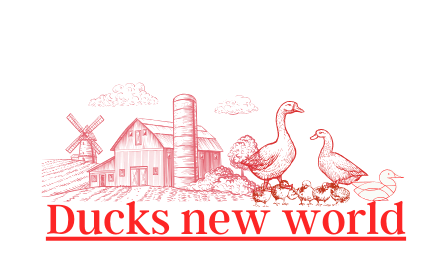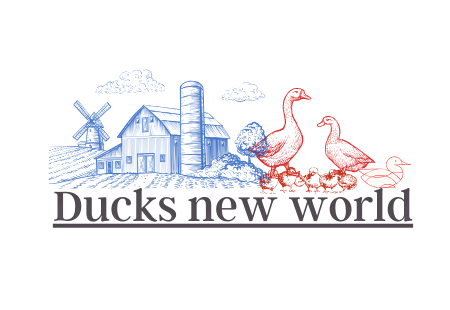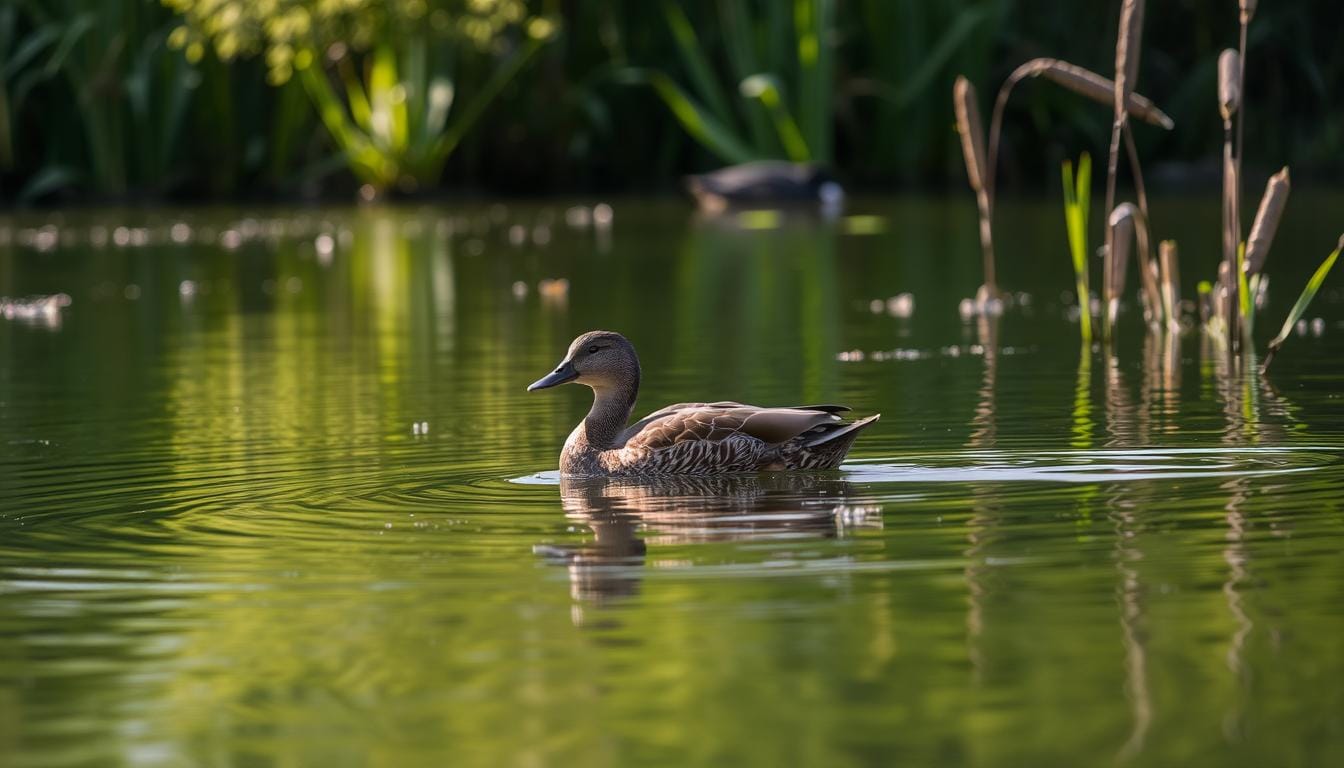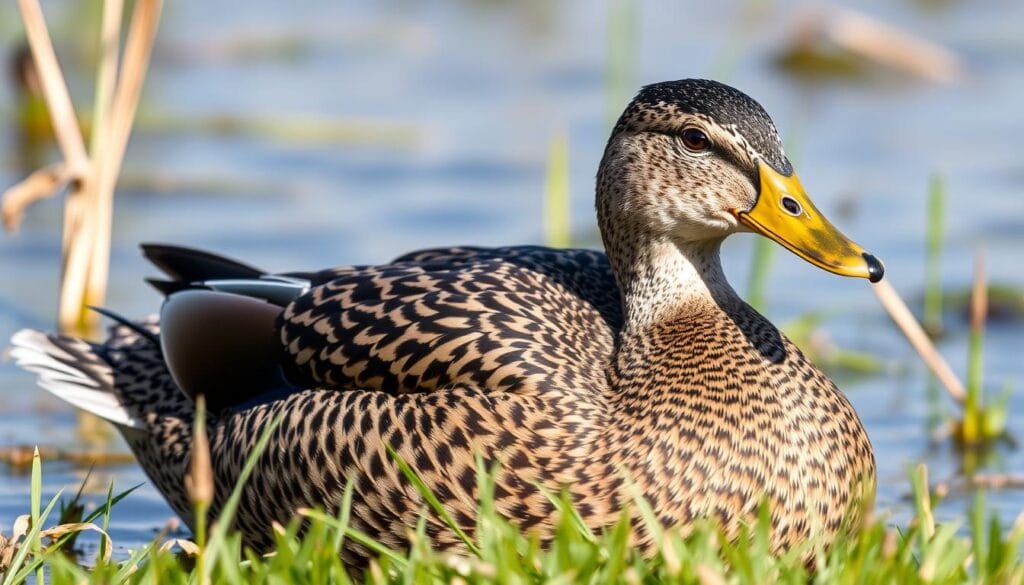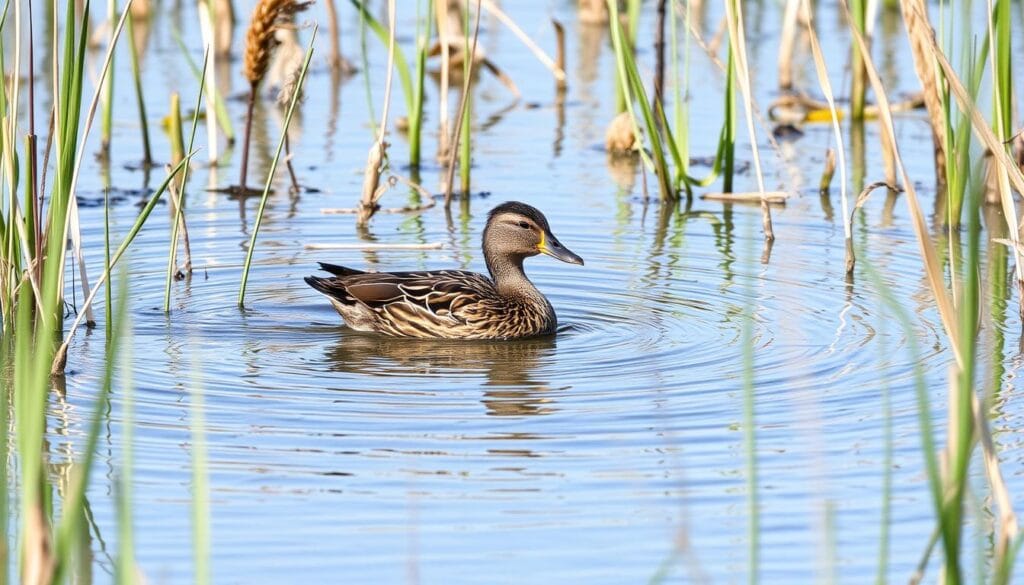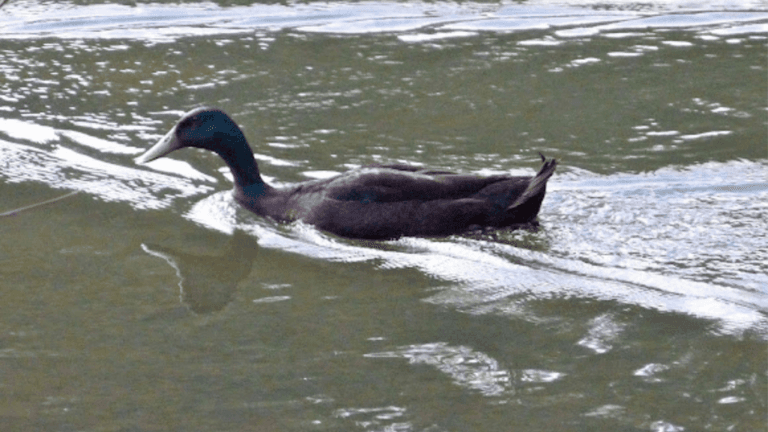The mottled duck (Anas fulvigula) is a special waterfowl found in the southern United States. It’s a medium-sized dabbling duck that lives in brackish and freshwater marshes. This duck doesn’t migrate, staying in the Gulf Coast wetlands all year.
This duck is crucial to the southern ecosystem but faces big challenges. Habitat loss and mixing with feral mallards threaten its numbers. The Coastal Prairie Conservancy is working hard to save this species and its home.
The mottled duck has a strong body, short neck, and a long bill. Both males and females have brown and buff feathers, a yellow bill, and a black patch at the beak. These features help them hide in their favorite places like shallow marshes and flooded fields.
Key Takeaways
- Mottled ducks are non-migratory waterfowl native to the southern US
- They inhabit freshwater and brackish wetlands along the Gulf Coast
- The species faces threats from habitat loss and hybridization
- Both male and female mottled ducks have similar brown and buff plumage
- Conservation efforts are crucial for protecting this unique dabbling duck
Introduction to the Mottled Duck
The mottled duck is a special bird in southern US ecosystems. It doesn’t migrate and is a key sign of wetland health. This makes it crucial for studying birds and their habitats.
Overview of the Species
Mottled ducks belong to the mallard complex, a group of similar ducks. They are the only dabbling ducks that live in the Gulf Coast all year. These birds are about 21 inches long and weigh around 2 1/4 pounds. They usually live 5 years in the wild, but some can live up to 13 years.
Geographic Distribution
There are two main groups of mottled ducks in North America. One lives in peninsular Florida, and the other stretches from Alabama to Veracruz, Mexico. In the late 1970s, they were introduced to South Carolina, creating new populations along the coast.
Importance in Southern US Ecosystems
Mottled ducks are vital to the Gulf Coast. They are the only ducks that breed in southern marshes, nesting from February to July. Their behavior and presence help us understand changes in wetlands and the environment.
| Characteristic | Measurement |
|---|---|
| Average Length | 55 cm |
| Average Weight | 1043 g |
| Average Wingspan | 259 mm |
| Clutch Size | 8-12 eggs |
Physical Characteristics of the Mottled Duck
The Mottled Duck, known scientifically as Anas fulvigula, is a unique waterfowl species found in the southern United States. It stands out with its distinct features from other similar birds.
Size and Shape
Mottled Ducks are medium-sized, similar to Mallards. They are about 21 inches long and weigh around 2 1/4 pounds. They have a strong build with a short neck and a bill that’s just right for their dabbling way of life.
Plumage and Coloration
The Mottled Duck’s feathers are a warm dark-brown color, with a pale buffy head and dark brown cap. Males have bright yellow bills, while females have mostly blackish bills with yellow tips. Unlike Mallards, Mottled Ducks don’t have the bright green head, making them unique among waterfowl species.
Distinguishing Features
It can be hard to tell Mottled Ducks from female Mallards. Key differences include:
- Lighter-colored neck and head compared to body feathers
- Absence of a broad, white upper wing bar
- Speculum (colored portion of the wing) with little or no white borders
Anas fulvigula are non-migratory birds. They form early pair bonds and lay 5-13 eggs in nests made of down and shredded grass. Their ability to breed in southern marshes makes them key to the ecosystem of fresh and brackish wetlands along the Gulf Coast.
Habitat and Range
The mottled duck is a special bird found in the southern United States. It lives in different types of marshes along the Gulf Coast. These birds like freshwater and brackish wetlands, such as ponds, lakes, and rivers. They are found all along the Gulf Coast, but a special kind lives only in Florida.
Mottled ducks need coastal and inland wetlands to survive. This marsh-dwelling species is facing big challenges because of habitat loss and damage. Things like cities growing and farms taking over are big threats to their homes.
It’s very important to work on saving wetlands to help mottled ducks. These birds have been losing ground fast, dropping by 3.1% every year from 1966 to 2015. That means they’ve lost 78% of their numbers over 50 years.
| Region | Population Density | Key Habitats |
|---|---|---|
| Louisiana | High | Coastal marshes |
| Southern Texas | High | Wetlands, flooded fields |
| Florida | High | Lake Okeechobee, Upper St. Johns River |
| Gulf of Mexico Coast | Moderate | Coastal wetlands |
| Vera Cruz, Mexico | Low | Scattered wetlands |
There are about 460,000 mottled ducks in the world. They are considered a species that needs urgent help because of their low numbers. Saving their marsh homes is key to keeping this special bird around.
Mottled Duck Behavior and Lifestyle
The mottled duck is a special dabbling duck species. They like to hang out in pairs or small groups. This makes them stand out from other ducks. They don’t migrate, which changes how they live, including where they eat, breed, and nest.
Feeding Habits
Mottled ducks eat both plants and animals. They tip up in shallow water to get to plants or small animals under the surface. They don’t change their eating habits with the seasons, unlike some birds that migrate.
Breeding and Nesting Patterns
Breeding happens from late winter to summer. Females build nests in thick plants near water and lay about eight eggs. These eggs are creamy to greenish-white. The babies are ready to leave the nest soon after they hatch, helping them fit into their wetland home quickly.
Lack of Migration
Mottled ducks don’t migrate. This means they have special behaviors. They move short distances at night based on how much energy they have and if their home is disturbed. They don’t join big groups like some migrating ducks do because they stay in one place.
